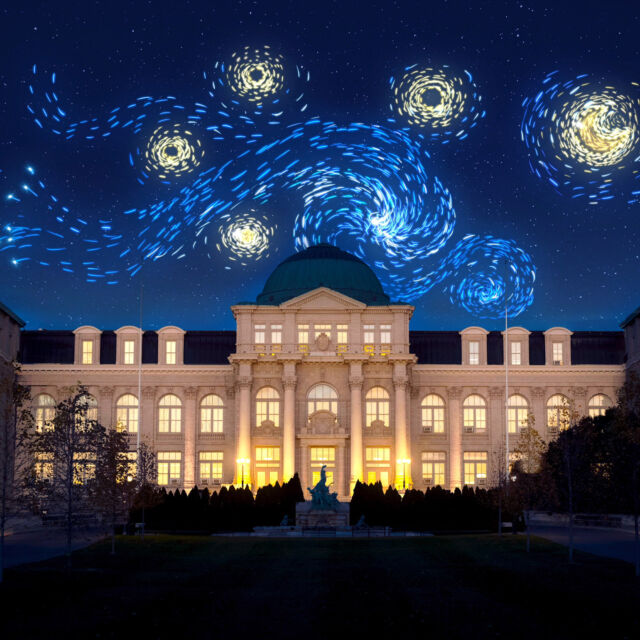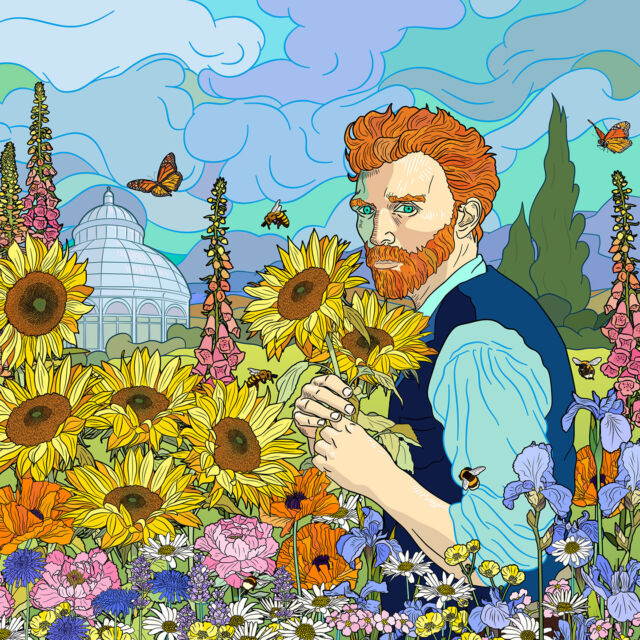Forests and Fires: Friends or Foes?

In modern Western society, fire is often a force that is feared. It feels uncontrollable, reckless, and destructive—a sign that nature and humanity are always at odds.
However, fire is perceived more positively in many Indigenous cultures, and its strength has been harnessed and used for centuries to benefit the landscape. A longstanding technique of Indigenous land management, applied fire is used to build landscape resilience and mitigate the risk of larger fires by creating breaks in the continuity of fire fuels across landscapes, according to NOAA. Lighting deliberate, smaller, contained fires minimizes the risk of megafires, which choke without uninterrupted stretches of forests, grasslands, and decaying underbrush—this fuel having been thinned and burned. Indigenous burning practices ensure that ecologically important fires happen when and where they are needed.
Many Native American tribes have long followed an annual burn cycle in order to increase soil fertility, which leads to an increase in plant growth. Some plants—like pines and wild lupines—depend on fire for germination. While animals and plants within fire-prone ecosystems have adapted to the natural cycle of fires, invasives are less likely to recover, so contained fires can be a good method of eradicating them. Thinning out dense forests and meadows could also encourage the growth of medicinal and edible plants that were previously crowded out, and eventually create habitat for wildlife. Contained, low-intensity burns are watched closely by Indigenous groups—they monitor moisture levels, wind speed and direction, and only burn during the most optimal times to protect specific plant species that haven’t yet sprouted.
However, traditional ecological knowledge has for decades been rejected by Western thought, starting with the first European settlers and permeating our modern national fire policy. As our environmental conditions create land that acts as an almost perfect host for more extreme, widespread, and prolonged fires—rising temperatures, more severe droughts, deforestation, infrequent or sporadic precipitation—fire continues to prove a menacing danger to ever-growing urban and suburban infrastructure. Especially when lives are at risk.
History of Fire Policy in America
In the late 1800s, foresters and early conservationists argued that wildfires threatened commercial timber supplies. In turn, the U.S. government began setting aside national forest reservations. With the establishment of the U.S. Forest Service in 1905, forests were deemed controlled and managed by the federal government—threatening Indigenous practices that had been part of the landscape for millennia.
In 1910, a series of forest fires burned three million acres in Montana, Idaho, and Washington in only two days. In reaction to what is now known as the “Big Blowup,” the Forest Service implemented a policy of total fire suppression and later passed the Weeks Act of 1911, establishing a framework of cooperative firefighting between the states and federal government, and the protection of their land. In the years that followed, the Forest Service built infrastructure like lookout towers and ranger stations, educated the public about fire prevention, established the Civilian Conservation Corps to create more firefighting jobs, and created the 10 A.M. Policy, which dictated that every fire be suppressed by 10 a.m. the day following its initial report. Later came the development of new fire suppression policies, like chemicals released from airplanes.
When Smokey Bear came on the scene in 1944, fire seemed to have been labeled an enemy of the American public—and while his likeness welcomed visitors at the entrances of countless U.S. national forests, fossil fuel emissions were simultaneously growing every decade. Carbon dioxide pumped into the atmosphere each year climbed from 11 billion tons in the mid-1900s to approximately 36.6 billion tons in 2023 (Global Carbon Budget 2023).
Fires and Forests
Fires have always been a part of our planet’s ecosystems, but like any natural disaster, our changing climate and other human-caused challenges are causing wildfires to become larger and more common—and at the intersection of climate change and wildfires are forests. These green giants are natural solutions to rising emissions, their ability to sequester carbon and emit oxygen giving them a reputation as major carbon sinks. The value of forests is undeniable: beyond carbon sequestration, they provide habitat, contain rich biodiversity and natural resources, make the air we breathe possible, and provide culturally and ecologically important ecosystems the world over. Their value to economic policy is now quantified through carbon offsetting—a scheme that allows individuals, and usually corporations, to compensate for their emissions by investing in sustainable projects around the world that provide a purportedly equivalent emission reduction elsewhere. Scientists like NYBG’s Brad Oberle note that forests are one of the best strategies we have—and even better, they’re a nature-based solution.
However, when a forest releases more carbon than it stores, it’s considered a source of carbon—and this can happen during a wildfire that burns through large expanses of woodland, using the timber as fuel. Forests, once solely viewed as virtuous in their environmental role, are now becoming as complex as the climate crisis itself. Every day, we see more stories of groups claiming the risk of forests: Oregonian foresters declaring they need to cut down Douglas firs to minimize wildfire risk and protect timber supplies; researchers in Canada claiming that forests have “reached their tipping point”—since when did forests become so controversial?
Looking to the Future
Are forests good or bad? Are fires helpful or harmful?
It’s never that easy in the natural world, but we can start by rethinking our relationship to forests, acknowledging that intentional fires and protected forests can exist simultaneously—and even benefit one another.
Both controlled burns and the health of forests have been weakened in the modern age by poor management, which from the beginning had the interests of commercial timber in mind. Though regulations now seek to enforce public safety and preservation of forests—which is incredibly important—federal and state governments abandoned Indigenous knowledge without realizing how it could work within our current framework to benefit our population and landscapes. Incorporating traditional ecological knowledge could be the answer to our new norm of megafires that are destroying lives and land.
Without a doubt, forests are a necessity. But maybe prescribed fires are becoming one too?
It’s not that simple, but The National Park Service didn’t recognize fire as an important ecological process until 1968, when policy changed to allow naturally caused fires to run their courses until they grew to a certain size, at which point they would be suppressed. In the years following, the effectiveness of this policy hinged on proper management, understanding, and adequate resources. Some of these “natural prescribed fires” burned too many acres—leading to public outcry. However, progress continues in wildland fire programs, through training, implementation guides, and collaboration with organizations that monitor air quality. Though monitored fires are important to ecosystems, it’s important to note that any fires started unintentionally can grow to become incredibly dangerous—especially with our current climate. That’s why suppression tools and management can work hand-in-hand with Indigenous knowledge.
When looking beyond naturally caused fires to intentionally applied burns, state governments are only now starting to acknowledge the importance of Indigenous fire knowledge. For example, California—where some of the most devastating megafires have occurred—is beginning to reconsider its strict fire regulations, introducing prescribed burns back into its landscapes. To Native Americans, though, its reintroduction comes as a bittersweet reminder of their cultural oppression. In 2023, the state even adopted a strategic plan that included the goal of expanding prescribed burns to 400,000 acres annually by 2025—and called for enhanced tribal engagement along with the expanded use of cultural burns. Fire policy must now take into account our growing population, increasing development of natural landscapes, and the proximity of a fire to densely populated areas. These days, controlled burns require extensive paperwork, assessments, and regulations, and therefore take more approval time. However, California, along with states in the Southwest, are moving toward a more fire-forward policy. Researchers are even using AI to help predict wildfires, and building computer models to understand how fire evolves under different conditions. Through this, they hope to generate fire management plans through end goals, like burning a percentage of vegetation, or minimizing the impact on air quality.
The future of fires, and their relationship to forests, is a complex one—but one that is transforming right alongside our planet.
Want to learn even more? Check out our episode of Plant People, NYBG’s podcast, with guest Michael Dockry.
SUBSCRIBE
Enter your email address to subscribe to this blog and receive updates on new posts.











